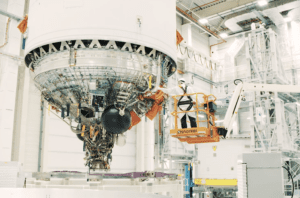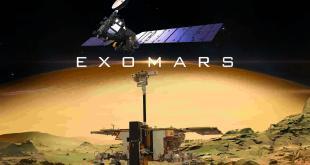
Paris, 6 September 2021. – The ESA Member States have agreed on Europe´s exploitation of the new Ariane 6 and Vega-C launchers and its future space transportation options, the European Space Agency (ESA) said.
The agreement frames the conditions for Europe’s exploitation of Ariane 6 and Vega-C and requests ESA “to propose a roadmap for new and innovative space transportation solutions for the next decade and a framework for associated short cycle demonstrations”, ESA said.
The resolution sets the conditions for the first three years of “stabilised exploitation” of Europe’s new launch vehicles “to provide guaranteed access to space for Europe in the coming years”, ESA said.
The revised model is based on a European institutional launch service demand of four Ariane 6 vehicles (three Ariane 62 with two boosters and one Ariane 64 with four boosters, or two positions on a dual payload launch on Ariane 64) and two Vega-C per year on average, the agency said. Price conditions for the associated standard launch service have also been agreed upon, ESA said, without disclosing details.
The ESA Member States agreed to support the development of “options to serve either additional institutional launches or a higher commercial demand”. The Council Meeting at Ministerial Level at the end of 2022 is to decide on the financial frames, ESA said. “European institutional customers of launch services will also need to commit to launch on ESA-developed launchers”, it added.
The ESA Council also requested the ESA Director General to agree with the EU on a “European flight ticket initiative to regularly demonstrate and validate in orbit missions of less than 200 kg on launch services with proven capabilities to be selected on a competitive basis”.
Furthermore, the ESA Member States have tasked ESA to propose “the next generation of European space transportation solutions required for the next decade”. They mandate ESA to create “a frame for short-cycle demonstration of such space transportation solutions for approval at the occasion of the upcoming Council Meeting at Ministerial Level”.
“Considering the continuously changing space transportation market, the agreed boundary conditions ensure a stable reference for the successful exploitation of Ariane 6 and Vega-C to serve European institutional needs and the commercial market,” Daniel Neuenschwander, ESA Director of Space Transportation said. “At the same time, Member States have given ESA the important mandate to propose a roadmap for new and innovative European space transportation solutions for the next decade and beyond. In addition, we will work, together with the European Union to foster regular opportunities for small missions to be launched on flight-proven European launch vehicles, selected on a competitive basis”.





